Here below, is a bit of history on how Russia marked his presence in the Icy Continent with its several Scientific Bases at the beginning of international scientific expeditions to Antarctica.
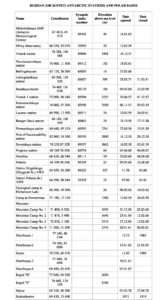 The first plans for a Soviet Antarctic expedition were drawn up just before the second International Polar Year (1932-1933), but the expedition never took place. Soviet Antarctic expeditions began general, comprehensive scientific research covering the southern oceans as well as the Antarctic mainland in 1956, when preparations were begun for International Geophysical Year (IGY).
The first plans for a Soviet Antarctic expedition were drawn up just before the second International Polar Year (1932-1933), but the expedition never took place. Soviet Antarctic expeditions began general, comprehensive scientific research covering the southern oceans as well as the Antarctic mainland in 1956, when preparations were begun for International Geophysical Year (IGY).
In February 1956 the participants in the Soviet Antarctic Expedition (SAE) established the Mirny observatory, a Scientific Station (WAP RUS-Ø7) on the Antarctic mainland.
In May 1956, observations were begun at Pionerskaya (WAP RUS-1Ø), an inland station located some 375 kms South of Mirny.
In October 1956 the Oasis Station (WAP RUS-NEW) began working, located at the Bunger Oasis, on the coast of Wilkes Land.
The inland station Vostok-1 (WAP RUS-14), Komsomolskaya (WAP RUS-Ø5) and Vostok (WAP RUS-13) were founded in 1957; the latter was located near the South Magnetic Pole.
In 1958 the Sovetskaya (RUS-NEW) and Polyus Nedostupnosti (Pole of Inaccessibility Stations WAP RUS-NEW) began observations.
Between 1956 and 1958 eight stations were thus established under the IGY program. After IGY, observations continued at the Mirny observatory and the Vostok station.
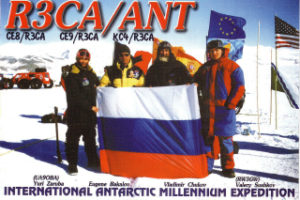
In the following years a number of permanent, seasonal and temporary stations and bases were built.
As form 1968, Molodezhnaya (WAP RUS-Ø8) became the main base of Antarctic research as well as the Antarctic Meteorological Centre.
Year-round observations are now made at five stations of the Russian Antarctic Expedition (RAE): Molodezhnaya (WAP RUS-Ø8), Mirny (WAP RUS-Ø7), Novolazarevskaya (WAP RUS-Ø9), Bellingshausen (WAP RUS-Ø1) and Vostok (WAP RUS-13 which was temporarily closed in 1994). They measure meteorological and upper-air parameters, receive satellite information, an measure the levels of total ozone and of several other atmospheric trace gases. They also conduct a number of studies of the ionosphere.
Source: https://www.wmo.int/pages/prog/www/Antarctica/Ant-cat-Rus-Fed.html
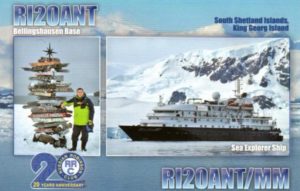 We would like to remark that Russia is probably the solo Country that have always been “On the Air” since the Antarctic epic, with hundreds of very professional Radio operators that, still now are very active on HF Hams bands. Our appreciation to the constancy and tenacity of all Russian radio amateurs who are an example of professionalism!
We would like to remark that Russia is probably the solo Country that have always been “On the Air” since the Antarctic epic, with hundreds of very professional Radio operators that, still now are very active on HF Hams bands. Our appreciation to the constancy and tenacity of all Russian radio amateurs who are an example of professionalism!
Let us not forget that , to celebrate the 20th anniversary of the Russian Robinson Club, RRC club members Alexander/RW3RN and Oleg/UA3HK/ZS1OIN have been active on last December 2013, from the Russian Antarctic station “Bellingshausen” on the Island of King George signing RI2ØANT &.RI2ØANT/MM
 Hams from Italy and few coming from neighboring European Countries have joined the 18th DCI Meeting (Italian Castles), IFFA (Flora and Fauna) and 16th Worldwide Antarctic Program (WAP).
Hams from Italy and few coming from neighboring European Countries have joined the 18th DCI Meeting (Italian Castles), IFFA (Flora and Fauna) and 16th Worldwide Antarctic Program (WAP).
 The first plans for a Soviet Antarctic expedition were drawn up just before the second International Polar Year (1932-1933), but the expedition never took place. Soviet Antarctic expeditions began general, comprehensive scientific research covering the southern oceans as well as the Antarctic mainland in 1956, when preparations were begun for International Geophysical Year (IGY).
The first plans for a Soviet Antarctic expedition were drawn up just before the second International Polar Year (1932-1933), but the expedition never took place. Soviet Antarctic expeditions began general, comprehensive scientific research covering the southern oceans as well as the Antarctic mainland in 1956, when preparations were begun for International Geophysical Year (IGY).
 We would like to remark that Russia is probably the solo Country that have always been “On the Air” since the Antarctic epic, with hundreds of very professional Radio operators that, still now are very active on HF Hams bands. Our appreciation to the constancy and tenacity of all Russian radio amateurs who are an example of professionalism!
We would like to remark that Russia is probably the solo Country that have always been “On the Air” since the Antarctic epic, with hundreds of very professional Radio operators that, still now are very active on HF Hams bands. Our appreciation to the constancy and tenacity of all Russian radio amateurs who are an example of professionalism! It was on 20 November 1984 that China dispatched its first Antarctic research expedition team, and by the end of this expedition, the country established its first Antarctic research station, the Great Wall Station on 20 February 1985. So far, China has done 35 national Antarctic expeditions and established two year-round research stations, namely the Great Wall Station (1985) in West Antarctica and the Zhongshan Station (1989) located in the Larsemann Hills, East Antarctica; one inner land summer station, the Kunlun Station (2009) located on “Dome A”, the highest place in Antarctica and one camp, namely the Taishan Camp (2014) located in Princess Elizabeth Land.
It was on 20 November 1984 that China dispatched its first Antarctic research expedition team, and by the end of this expedition, the country established its first Antarctic research station, the Great Wall Station on 20 February 1985. So far, China has done 35 national Antarctic expeditions and established two year-round research stations, namely the Great Wall Station (1985) in West Antarctica and the Zhongshan Station (1989) located in the Larsemann Hills, East Antarctica; one inner land summer station, the Kunlun Station (2009) located on “Dome A”, the highest place in Antarctica and one camp, namely the Taishan Camp (2014) located in Princess Elizabeth Land. Comprehensive Investigation and Assessment Programs” (2015-2020). Regarding Antarctica, the Program comprises three parts: the Antarctic Marine Environment Survey, the Antarctic Terrestrial Environment Survey and the Comprehensive Assessment of the Antarctic Environment. The program is implemented through a series of surveys and assessments, involving various disciplines. In addition, China continues to conduct routine observations at the Great Wall Station (WAP CHN-Ø1)and the Zhongshan Station (WAP CHN-Ø2). To strengthen international cooperation in Antarctic research, international participants are encouraged to join in the Program through collaboration with national institutes and universities. Notably, China has been preparing to launch its fifth Antarctic research station, which is expected to be finalized by 2022.
Comprehensive Investigation and Assessment Programs” (2015-2020). Regarding Antarctica, the Program comprises three parts: the Antarctic Marine Environment Survey, the Antarctic Terrestrial Environment Survey and the Comprehensive Assessment of the Antarctic Environment. The program is implemented through a series of surveys and assessments, involving various disciplines. In addition, China continues to conduct routine observations at the Great Wall Station (WAP CHN-Ø1)and the Zhongshan Station (WAP CHN-Ø2). To strengthen international cooperation in Antarctic research, international participants are encouraged to join in the Program through collaboration with national institutes and universities. Notably, China has been preparing to launch its fifth Antarctic research station, which is expected to be finalized by 2022.

 Gus Smitka OE3SGA is a real Old Timer and for long time a keen DXer and Antarctic Hunter.
Gus Smitka OE3SGA is a real Old Timer and for long time a keen DXer and Antarctic Hunter.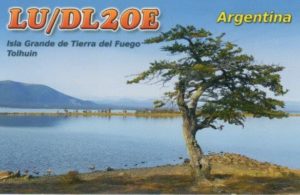

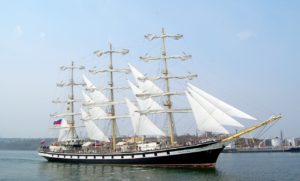 In effect, 2020 marks the 200th anniversary of the discovery of Antarctica by the expedition led by Fabian Bellingshausen and Mikhail Lazarev. In honor of this event, plans are underway for the round-the-world sailing of the tall ships Pallada (
In effect, 2020 marks the 200th anniversary of the discovery of Antarctica by the expedition led by Fabian Bellingshausen and Mikhail Lazarev. In honor of this event, plans are underway for the round-the-world sailing of the tall ships Pallada (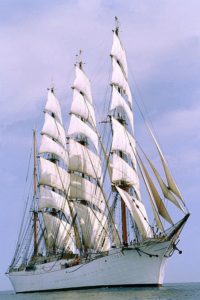 , the Vostok, commanded by Fabian Bellingshausen, and the Mirny, commanded by Mikhail Lazarev, left Kronstadt in 1819 and discovered Antarctica on 28 January 1820. In 1821, the ships returned to Kronstadt. They stayed at sea for 751 days and covered over 92,000 km. In addition to Antarctica, the expedition discovered 29 islands and one coral reef. The Russian sailors conducted scientific research, including oceanographic research.
, the Vostok, commanded by Fabian Bellingshausen, and the Mirny, commanded by Mikhail Lazarev, left Kronstadt in 1819 and discovered Antarctica on 28 January 1820. In 1821, the ships returned to Kronstadt. They stayed at sea for 751 days and covered over 92,000 km. In addition to Antarctica, the expedition discovered 29 islands and one coral reef. The Russian sailors conducted scientific research, including oceanographic research.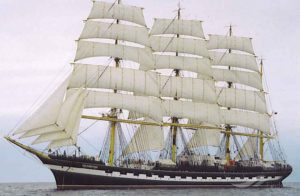
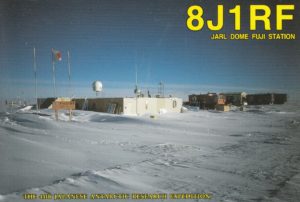 Dome-Fuji Station, 77°30’South, 37°30’East was established in January, 1995 to conduct deep ice-core drilling at the highest dome of Dronning Maud Land, some 1000 km away from Syowa Station. After completing 3035 m deep drilling, the station is being closed temporarily.
Dome-Fuji Station, 77°30’South, 37°30’East was established in January, 1995 to conduct deep ice-core drilling at the highest dome of Dronning Maud Land, some 1000 km away from Syowa Station. After completing 3035 m deep drilling, the station is being closed temporarily.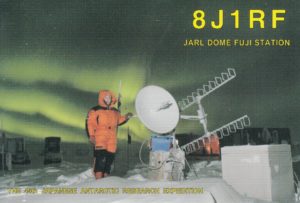
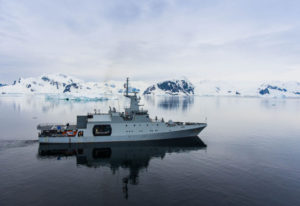 Colombia plans to set up its base at a point along the Gerlache Strait, a body of water 100 miles long and 20 miles wide that separates the Palmer Archipelago from the Danco Coast on the western side of the Antarctic Peninsula.
Colombia plans to set up its base at a point along the Gerlache Strait, a body of water 100 miles long and 20 miles wide that separates the Palmer Archipelago from the Danco Coast on the western side of the Antarctic Peninsula.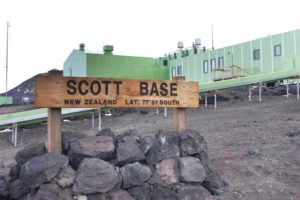 During this Antarctic Winter Season there are at least 4 Stations active:
During this Antarctic Winter Season there are at least 4 Stations active: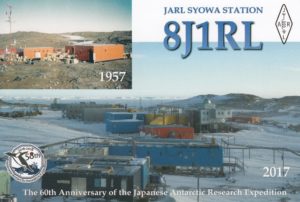
 A “Church in Antarctica” as well as any other signs or place of worship in any corners of the Icy Continent are the most sincere examples of faith and genuine places of worship; they deserve to be known.
A “Church in Antarctica” as well as any other signs or place of worship in any corners of the Icy Continent are the most sincere examples of faith and genuine places of worship; they deserve to be known. facing the Station buildings. A second bigger one, is sets little lower. Both statues are located in the great rock on which the lighthouse stands out (62°09′28″South 58°27′56″West), and people at Arctowski, call this corner “Chapel”.
facing the Station buildings. A second bigger one, is sets little lower. Both statues are located in the great rock on which the lighthouse stands out (62°09′28″South 58°27′56″West), and people at Arctowski, call this corner “Chapel”. No way to put a statue on cargo ship that brought the supplies to Arctowski. The workers hid the statue of the Virgin in a deep cargo box and smuggled it out of Polish border. Now both signs of devotion are proudly on the site that Polish staff did choose for them.
No way to put a statue on cargo ship that brought the supplies to Arctowski. The workers hid the statue of the Virgin in a deep cargo box and smuggled it out of Polish border. Now both signs of devotion are proudly on the site that Polish staff did choose for them. Norbert Maibaum (DL SWL), from Bonn, Germany is a very active Antarctic Chaser.
Norbert Maibaum (DL SWL), from Bonn, Germany is a very active Antarctic Chaser.